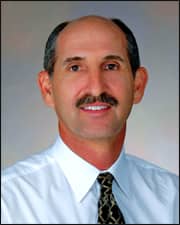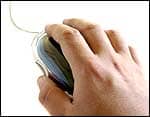by Jesse Ehrlich, DDS
Doctor-time scheduling can make your practice run more smoothly
 |
“How many patients do you see in a day?” We’ve all been asked this question by a general dental colleague. Have you been tempted to tell a “white lie”? Do you remember ever hiding your day sheets when a GP’s staff visits your office?
I’ve done both of these things, because most of my dental friends wouldn’t understand how it’s possible for my partner and I to comfortably see 120 patients each day. In fact, our schedule is probably better organized and less hectic than theirs, because we have taken full advantage of a technique called “doctor-time scheduling.”
I was first introduced to doctor-time scheduling by the visionary orthodontic consultant Karen Moawad in the mid-1980s. I don’t recall Karen’s exact words, but I think I remember her promising that I would “glide effortlessly between patients in a well-choreographed display of relaxed efficiency.” I smile when I remember this optimistic prediction. But now, 20 years later, I have to agree that on good days this actually can happen.
The Basics
 |
| Jesse Ehrlich, DDS |
What exactly is doctor-time scheduling? Imagine that you prefer to do three new-patient bandings each day right after lunch. Your three patients are scheduled at 1 pm. Your chairside assistants efficiently seat all three patients on time, and then look expectantly to you. The assistants all have the same expression. You can see it in their eyes: “Please see my patient first.”
While you start working with the first assistant, the other two assistants must wait patiently and then they will have to rush to complete their banding procedures in the scheduled time. Using a doctor-time schedule, these bandings would have been staggered in appreciation of the fact that the orthodontist simply can’t be in three places at once. Perhaps the three patients would have been scheduled at 1:00, 1:10, and 1:20. The orthodontist can then move smoothly from one patient to the next without keeping the patients and assistants waiting.
Doctor-time scheduling allows a practice to construct an intelligent framework for a perfectly scheduled day. After 20 years, the actual “perfect days” are very rare, but we almost always finish each day on time while completing all of our scheduled procedures. Also, we frequently survey our patients and we get consistent excellent ratings for starting appointments on time with minimal waiting.
Getting Started
Implementing a doctor-time schedule can be a challenging, time-consuming process. For a large practice, it would take a minimum of several months to implement a new schedule. There is an excellent description of the process in Ms Moawad’s book, Essays on Management of an Orthodontic Practice. Also, our practice has benefited greatly from the help of Lynne Fales of Foxfales Orthodontic Consulting. Lynne is an expert consultant who specializes in helping practices that use Ortho II or Dolphin Management software. Mary Beth Kirkpatrick and her team at Kirkpatrick and Associates provide similar services for Orthotrac practices.
Four distinct steps are involved in implementing a doctor-time schedule. First, it’s necessary to identify all of your clinical procedures. This can be more difficult than it sounds. In our practice, we have 115 unique procedures.
Second, a series of timings must be completed for each of these procedures. Each assistant should have a digital timer along with individual timing sheets. The sheets are designed to record both assistant and doctor time, as well as the total time elapsed during the procedure. A representative number of procedures must be timed so that accurate averages can be calculated. Avoid the temptation to skip this step and simply estimate these timings. We were all surprised by our actual timing results.
The third step is to review the timed procedures and to group those that have identical templates. For example, in our office, a one-arch banding has a very similar timing to a full debanding. Both procedures take the same amount of time within the schedule, and both have identical assistant-time and doctor-time requirements. Therefore, both of these procedures fit within the same appointment templates. It should be possible to come up with a manageable number of appointment templates within which all of your procedures will fit. In our office, we have a total of 22 templates, ranging in time from 10 to 105 minutes.
The final step is to incorporate these appointment templates into a “grid” for an idealized “perfect day” of work. This requires you to answer a number of important questions. When do you prefer to do certain procedures? How many of each procedure should be done in each day? Rather than guessing, it’s critical to do counts of past procedures so that there is sufficient availability in the new schedule to meet your practice’s needs. If a practice is growing rapidly, it’s important to allow time for additional consultation, banding, and debanding appointments.
It’s also a good idea to construct a number of different “perfect-day” appointment grids. We have full- and half-day grids, as well as schedules for one versus two orthodontists. We also have days with different lunch times. These various grids are then loaded into our practice-management scheduling software as we construct our daily, weekly, and monthly schedules.
It’s Never Perfect
Now, here’s the most important and frustrating point to keep in mind. Your schedule will never work perfectly. There are simply too many variables in place. The patients, assistants, doctors, and procedures all have some degree of unpredictability, so it’s naÏve to assume that everything will proceed as planned. However, we’re convinced that without the framework of the doctor-time schedule, we’d have little or no chance of success on a daily basis.
Tips and Tricks
There are a number of tips and tricks that enhance the way the schedule works for us. The appointment schedulers have to be disciplined in making appointments. Most scheduling software provides a “search” function that will only schedule appointments in their proper position. We do allow a few experienced people to “override the schedule”—that is, to make an appointment without using the search. However, they are trained in assessing the doctor time available so that these overrides should still work well.
Our software will also identify trouble spots in the schedule. These are areas in which there may be conflicts in doctor time due to incorrect scheduling or intentional overrides. We identify these potential “traffic jams” at the morning meeting, and it’s especially important for the orthodontists to be aware of these tightly scheduled times so that they can work efficiently and avoid delays that could further complicate the schedule.
When building the schedules, it’s a good idea to designate one of the treatment chairs as the “rookie” or “training” chair. The mix of procedures scheduled for this chair can be controlled, and additional time can be allowed before and after the procedures so that an inexperienced assistant has the chance to become proficient without consistently falling behind in the schedule.
We take advantage of our software’s “On Deck” display as well as light systems for guiding the orthodontists between patients. As patients sign in for their appointments, their names pop up on our On Deck system and at a glance we can see who is here and how long they have been waiting. Our assistants can then see patients in their scheduled order. The light-signaling systems can be hard-wired within the office or may be incorporated into the management software. These systems enable the assistants to silently signal the orthodontists when they’re ready for a procedure that requires doctor time.
What to Do When It Goes Wrong
Even with all of these carefully organized systems, every practice has an occasional “bad day.” We’ve all experienced the pressure of multiple patients being kept waiting well beyond their scheduled appointment times. When things start to go wrong early in the day, it can have a ripple effect and cause problems throughout the entire schedule.
When we’re in the midst of one of these rare days, our orthodontists and staff do their best to “Acknowledge, Apologize, and Accommodate.” It’s especially important that the orthodontists participate in this process. Acknowledgment doesn’t mean making excuses. Patients usually don’t want to hear that “An assistant called in sick” or “Our server is down.” A simple, sincere apology will go a long way toward making a patient feel better about being kept waiting.
We also keep a supply of small gift cards to give out in these circumstances. If a patient chooses to reschedule rather than wait, we will accommodate them by giving them a new appointment at their convenience—even if it means overbooking our schedule.
A “bad day” in a busy orthodontic office can also be extremely demoralizing for staff members. It’s critically important to avoid discussing the reasons for the problems during the day itself. It’s tempting for assistants to blame the scheduling personnel, who may in turn blame the orthodontists.
 |
| To find the practice-management software that works best for your office, visit our online Buyer’s Guide. |
It makes much more sense to wait until the day is over. Then, if anyone has any energy left, the orthodontists and clinical coordinator can review the schedule and determine if the actual systems were at fault. We will not hesitate to refine our appointment grids if we see a consistent problem occurring. We can also identify which appointments were scheduled incorrectly, and these mistakes can be reviewed privately with the appropriate staff members.
This article has described some of the basic features of doctor-time scheduling. If you’re interested in this system for your office, I’d advise reading more about it and then considering a consultation with an appropriate practice-management expert. If you do implement a doctor-time schedule, you still may not feel comfortable telling your general dental friends just how many patients you see each day. But you and your staff will be more productive and less stressed while providing treatment to your patients.
Jesse Ehrlich, DDS, has been in the private practice of orthodontics for the past 25 years. Ehrlich and his partner, Nitin Sallapudi, DDS, have offices in Venice and Englewood, Fla. Ehrlich is a Diplomate of the American Board of Orthodontics. He can be reached at










